94. The "Animal" Radical: 犬 and 犭
There's some uncertainty about the English term for the radical 犬 and its variant 犭.
Is It the "Dog" Radical?
Some refer to this as the "dog" radical. That makes sense, as 犬 means "dog." However, this radical appears inside kanji for animals other than dogs, such as these two:
猫 (1742: cat)
猿 (1028: monkey)
English speakers refer to "fighting like dogs and cats." Meanwhile, the Japanese see dogs and monkeys as rivals. The word 犬猿 (けんえん: dog and monkey; loggerheads) reflects this idea, as essay 1028 (猿) explains. Given these types of antagonisms, it's highly unlikely that you'd find a dog inside a cat or monkey! For this reason, I prefer the term "animal" radical. And in fact, as essay 1028 mentions, the 犭 in 猿 means "animal," not "dog."
Is It the "Beast" Radical?
Some people call 犬 and 犭 the "beast" radical. However, English speakers associate beasts with large animals, as in beasts of burden. A cat is much too small to be considered a beast, and if you ask a cat to bear any kind of burden, it will refuse. Even if a cat were larger, its attitude alone would disqualify it from being a beast of burden.
I should note that 猫 (cat) once had a different radical, 豸 (radical 153), which means "badger," "cat," or even "clawed beast." In fact, the non-Joyo 貓 still exists in Japanese writing to the extent that it's considered a variant of the simplified form 猫. Moreover, the radicals 犭 and 豸 remain interchangeable in certain kanji, such as 狸/貍 (tanuki or raccoon dog) and 獏/貘 (tapir), all of which are non-Joyo.
Japanese Names for the "Animal" Radical
Let's return to our discussion of 犬 and 犭. Here are the Japanese names for this radical:
犬 (いぬ, いぬへん)
犭 (けものへん, けもの, いぬへん)
To choose an appropriate name for any "animal" radical, consider the shape (the four-stroke 犬 or the three-stroke 犭) and the position of the radical. If it's on the left side of a character, -へん is appropriate.
Three Joyo Kanji with the 犬 Shape
Among Joyo kanji with an on-duty "animal" radical, I've found only three that "go whole dog," featuring 犬 as opposed to 犭:
献 (1219: to offer; counter for drinks)
According to Henshall (the source of all etymologies in this Radical Note), an older version of 献 originally symbolized a type of dog killed in sacrifices, then eaten. Oh my goodness. "Sacrificial dog" came to symbolize "sacrifice," as well as the general idea of "dedicating" or "presenting."
獄 (1274: prison, jail)
Actually, 獄 includes both the whole dog and its variant! This kanji originally represented people who were arguing as ferociously as two dogs in a barking match. The character meant "dispute," then "litigation," then "going through the legal process," and finally "prison." Look where fights lead!
獣 (1366: animal, beast)
The etymology is too complex to explore here, but ultimately 獣 represents a "dog that protects." Incidentally, this kanji appears in 獣医 (じゅうい: veterinarian).
By the way, 獣 has the kun-yomi of けもの, which must be where 犭 gets its name. On that topic, I've never seen 犭 anywhere but on the left side of a character, so けものへん should be the accurate term for any 犭.
Animal Kanji Featuring the "Animal" Radical
With nomenclature concerns out of the way, let's look at kanji that include the "animal" radical and that symbolize particular animals. Actually, we've already seen the only two in the Joyo set; those were 猫 (cat) and 猿 (monkey).
Many other animal characters are radicals in their own right, including 牛 (cow), 馬 (horse), 羊 (sheep), 鳥 (bird), 虫 (insect), 亀 (turtle), 竜 (dragon), 魚 (fish), 鹿 (deer), 虎 (tiger), 豸 (badger), and the non-Joyo 豕 (pig).
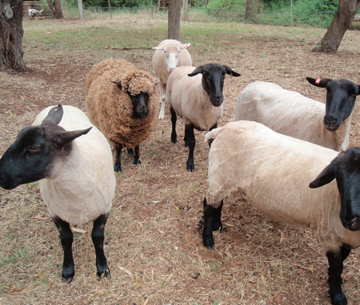 |
 |
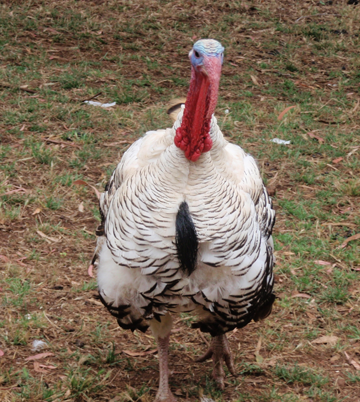 |
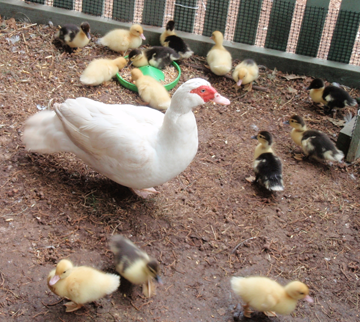 |
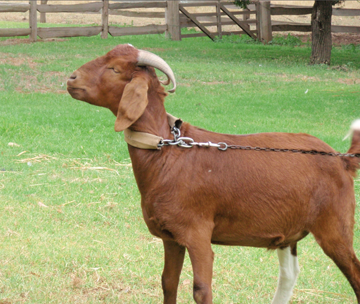 |
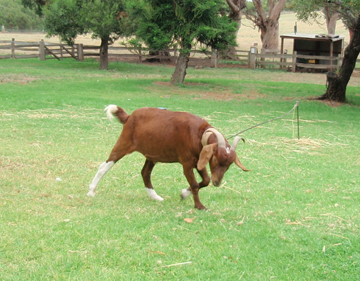 |
 |
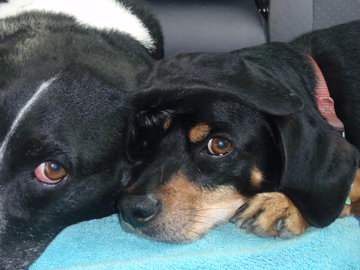 |
| Photo Credits: Eve Kushner |
If you venture outside the Joyo set in your search for animal kanji containing the "animal" radical, you can certainly get more bang for your buck. (This "buck" means "dollar," not a male deer, antelope, rabbit, sheep, or goat!) We've already seen kanji representing "raccoon dog" and "tapir." Here are several more animals of the non-Joyo species:
獅 (しし: lion)
狐 (きつね: fox), which pairs 犭 with a melon (瓜)!
狼 (おおかみ: wolf)
猪 (いのしし: wild boar)
猩々 (しょうじょう: orangutan)
On its own, 猩 means "orangutan," but in order to produce a full word that means "orangutan" (that is, しょうじょう, which also means "heavy drinker"!), you need to double 猩. For "orangutan" you could also use the much more common word オランウータン.
Hunting Kanji
The heading may be misleading; we're not hunting kanji in this section but rather investigating kanji that mean "hunting." Three such characters include the "animal" radical. That's not because those animals are being hunted. Rather, 犭 reflects that hunters often have dogs assist in the capture and kill. Here are those three kanji:
狩 (1347: to hunt)
As we saw with 獣 (1366), a dog that protects (守) its master is a hunting dog. The Japanese later extended the definition to mean "hunt."
猟 (1907: hunting, shooting, game)
The part that isn't the radical originally depicted a "hairy animal," so the whole kanji once represented a "hunting dog leaping on its prey." The character later came to mean "hunting" in general.
獲 (1079: to catch game or fish; get)
This kanji shows a "dog seizing a bird," leading to "seize, obtain" in a broad sense. Sometimes the character still pertains to hunting.
The first two kanji team up in the word 狩猟 (しゅりょう: hunting, hunt).
What's an Animal Like You Doing in a Place Like This?
It makes sense to find the "animal" radical in the following character:
猛 (1854: fierce)
However, it's stranger to locate it here:
狭 (1166: narrow, cramped, tight, constricted)
As essay 1166 explains, this犭 is a miscopying of "hill."
I'm also taken aback to spot an animal in this character:
猶 (1867: further, furthermore, still, still more)
Well, I'm less taken aback than amused when I see its role in this uncommon word: 猶子 (ゆうし: nephew, niece; adopted child). Other people's children aren't nearly as attractive as our own, so perhaps it seemed apt to compare those other children to animals—or even "monkeys"! That's what this犭represents. Taking into account the rest of the kanji, we have a "hesitant monkey"! Hesitation leads to delays, which means you "still" haven't done something. "Still" leads naturally to "moreover" or "furthermore."
In all the remaining kanji that we'll examine, 犭 specifically means "dog," and it surprises me in every case to see a dog in such a place:
犯 (768: crime, offense)
The right-hand component means "slumped figure," most likely one injured by a dog. That constitutes an "assault," which is a "crime."
狂 (1161: crazy, lunatic)
This character originally referred to a convulsing dog, which is to say a "mad dog." It later came to mean "crazy" in general.
独 (763: alone)
Way back when, this kanji represented dogs locked together so tightly in a fight that it's as if they had one body! This led to "as if one" and later "alone."
Animal Sandwiches
Speaking of being "locked together," I thought you might enjoy compounds that combine 犬 and 犭, often sandwiching other parts in the middle. Here you go:
猟犬 (りょうけん: hound, hunting dog) hunting + dog
犬狩り (いぬがり: mad-dog hunt) dog + hunt
猛犬 (もうけん: fierce dog) fierce + dog
猛獣 (もうじゅう: fierce animal) fierce + animal
狂犬病 (きょうけんびょう: rabies) crazy + dog + sickness
犬猫 (いぬねこ: dogs and cats) dogs + cats
